This post may contain affiliate links. Please read our disclosure policy.
How to make Homemade Tonnarelli Pasta. This long pasta shape also known as Spaghetti alla Chitarra is really simple to make. It uses a semolina pasta dough and a fun pasta tool called La Chitarra (guitar). See our easy step by step guide to make your own Tonnarelli pasta at home and delicious sauces to serve it with!
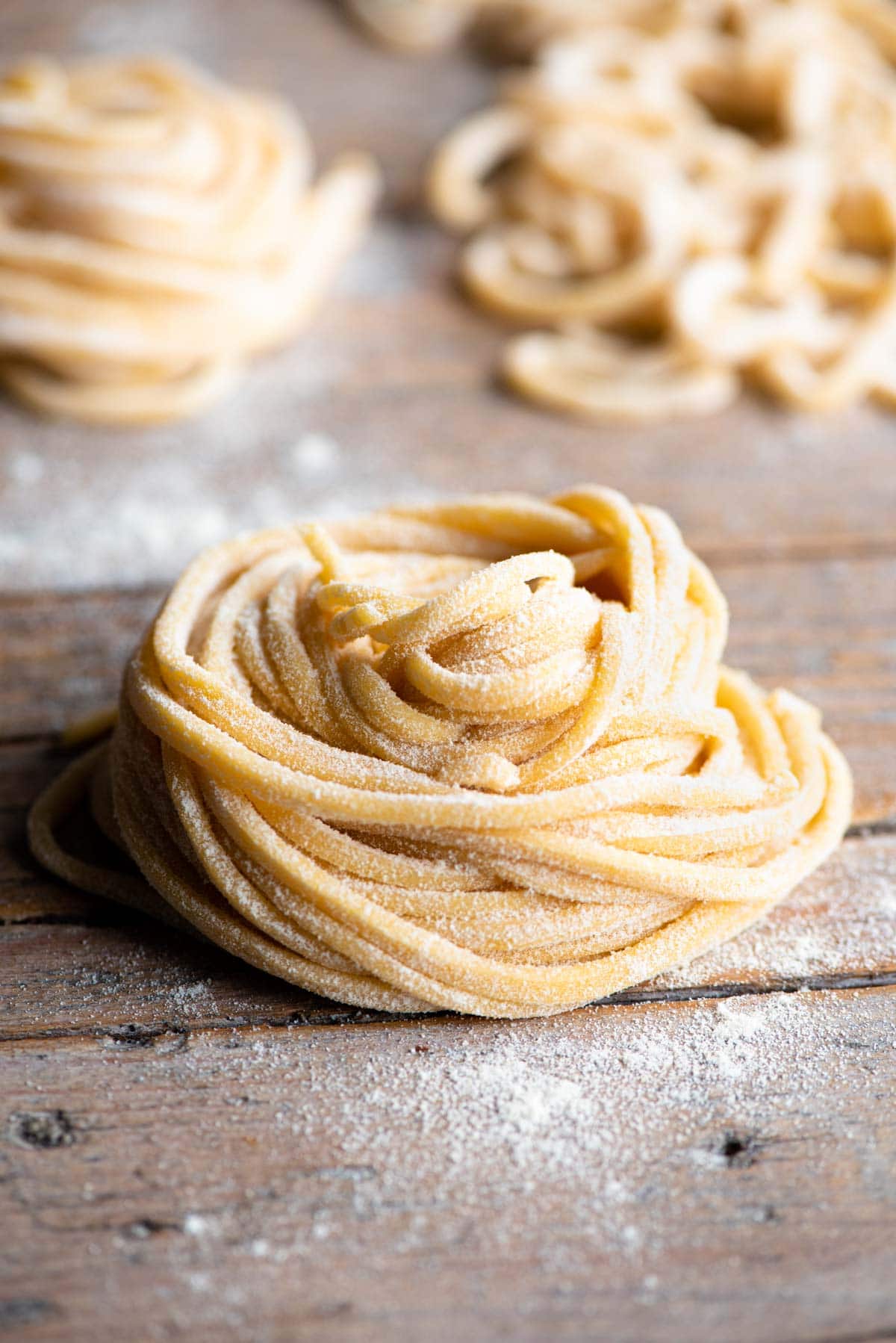
You’ll notice that Tonnarelli pasta looks very similar to spaghetti except it’s thicker and has square edges instead of round.
It’s such a delicious pasta that’s famously served with Cacio e Pepe in Lazio and alla Teramana style in Abruzzo (tiny meatballs in tomato sauce).
La Chitarra is the name of the pasta tool that’s used to make it. It’s really fun and easy to use and makes the perfect gift for pasta lovers.
See the recipe below including notes on ingredients, step by step photos, tips, variations and a video tutorial. For the full printable recipe scroll to the bottom or click the recipe link below
Ingredients – what you need
See the photo below that shows you everything you need to make this recipe plus some important tips on ingredients!
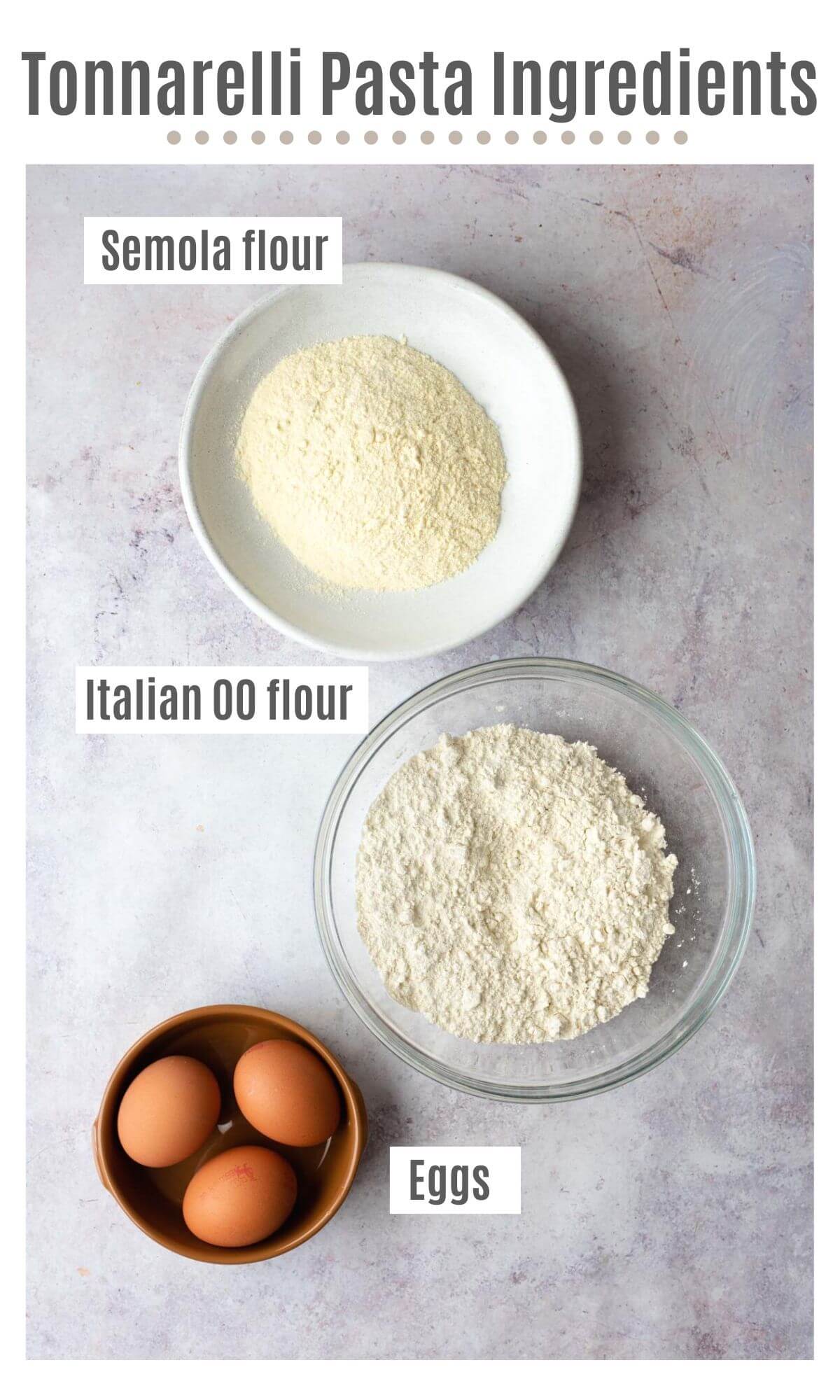
Pin this now to find it later
Pin It- Italian Tipo 00 Flour – although you could use all-purpose flour I hightly recommend using Italian 00 flour, it makes a big difference and shouldn’t be too hard to find.
- Semola – this is a super fine semolina flour and gives the pasta an extra bite and firmer texture. If you can’t find it then you can use all 00 flour instead.
- Eggs – large eggs.
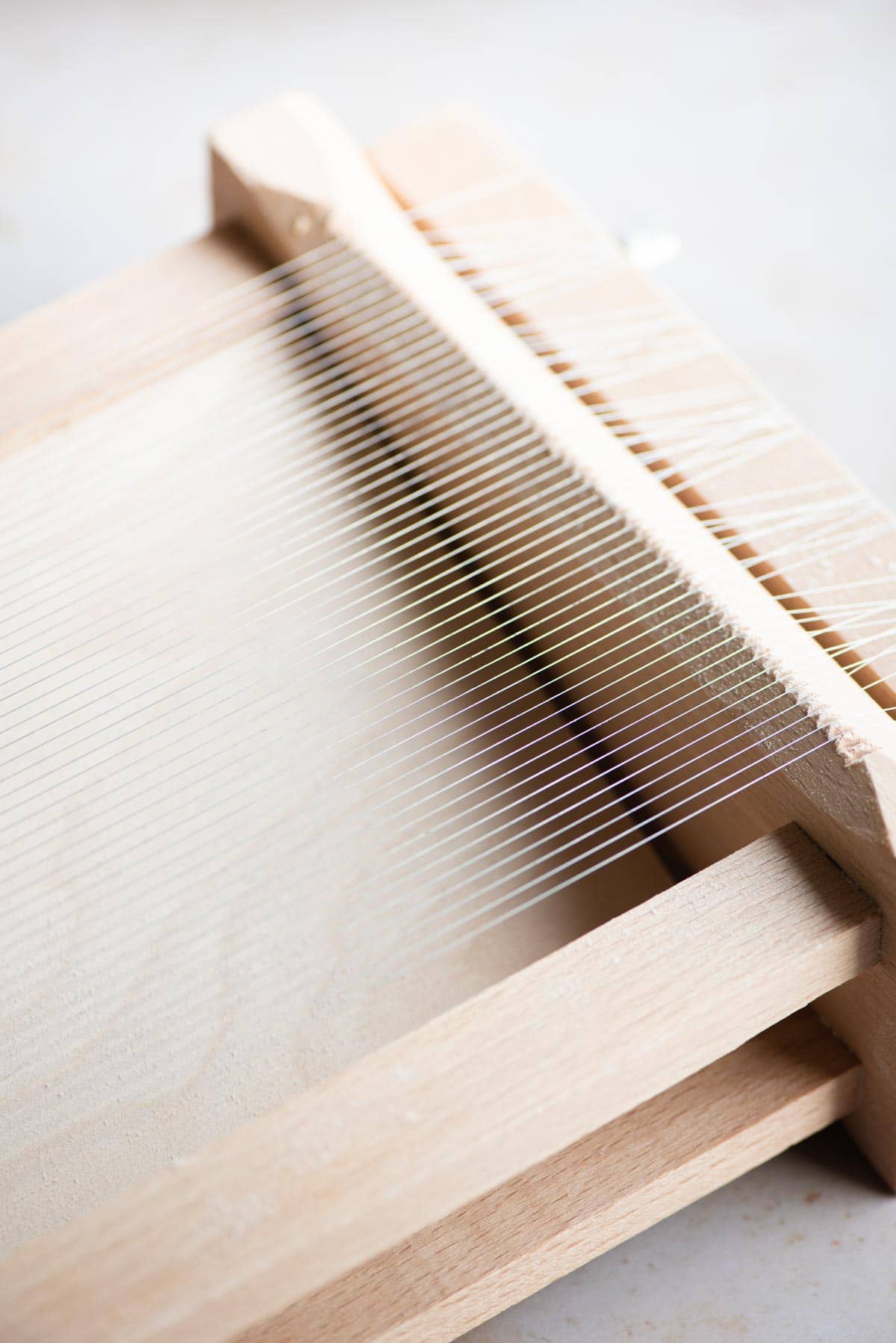
Step by step photos and recipe instructions
Step 1) Mix both flours in a bowl then tip it out onto a clean work surface. Press the bottom of the bowl into the middle of the flour to create a well (photos 1 & 2).
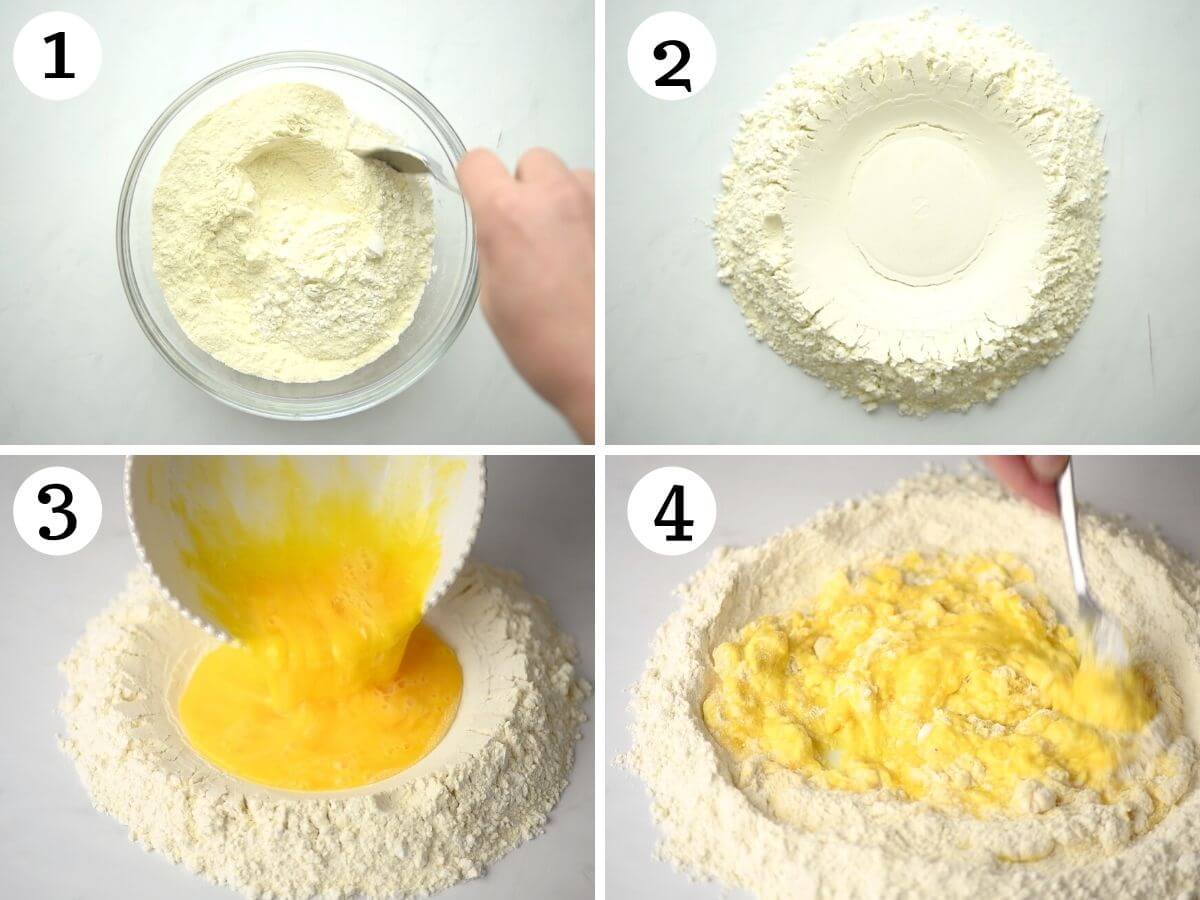
Step 2) In a separate bowl, whisk the eggs together until combined then pour them into the well in the flour. Using a fork, gradually incorporate the flour into the egg until a rough dough forms (photos 3-5).
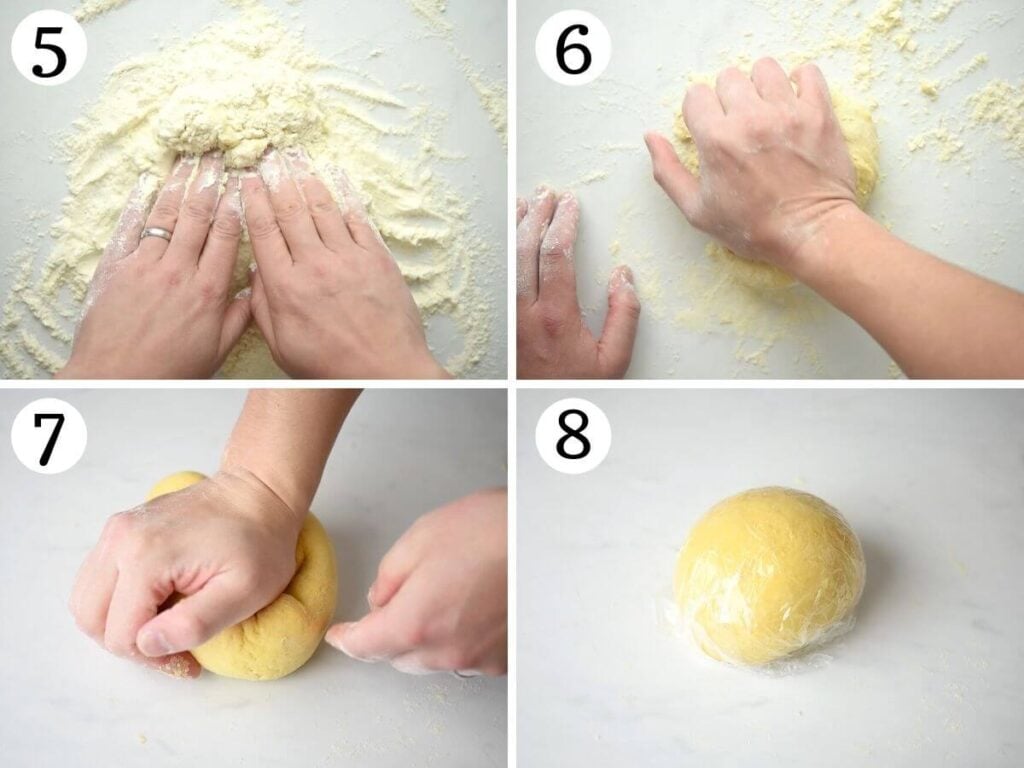
Step 3) Knead the dough using your hands for around 10 minutes until the dough is smooth and elastic, wrap in plastic wrap or a clean kitchen towel and let it rest for 30 minutes (photos 6-8).
Step 4) Once rested, cut the dough into 4. Roll one piece out into a rough rectangle to fit the Chitarra pasta tool (photos 9-11).
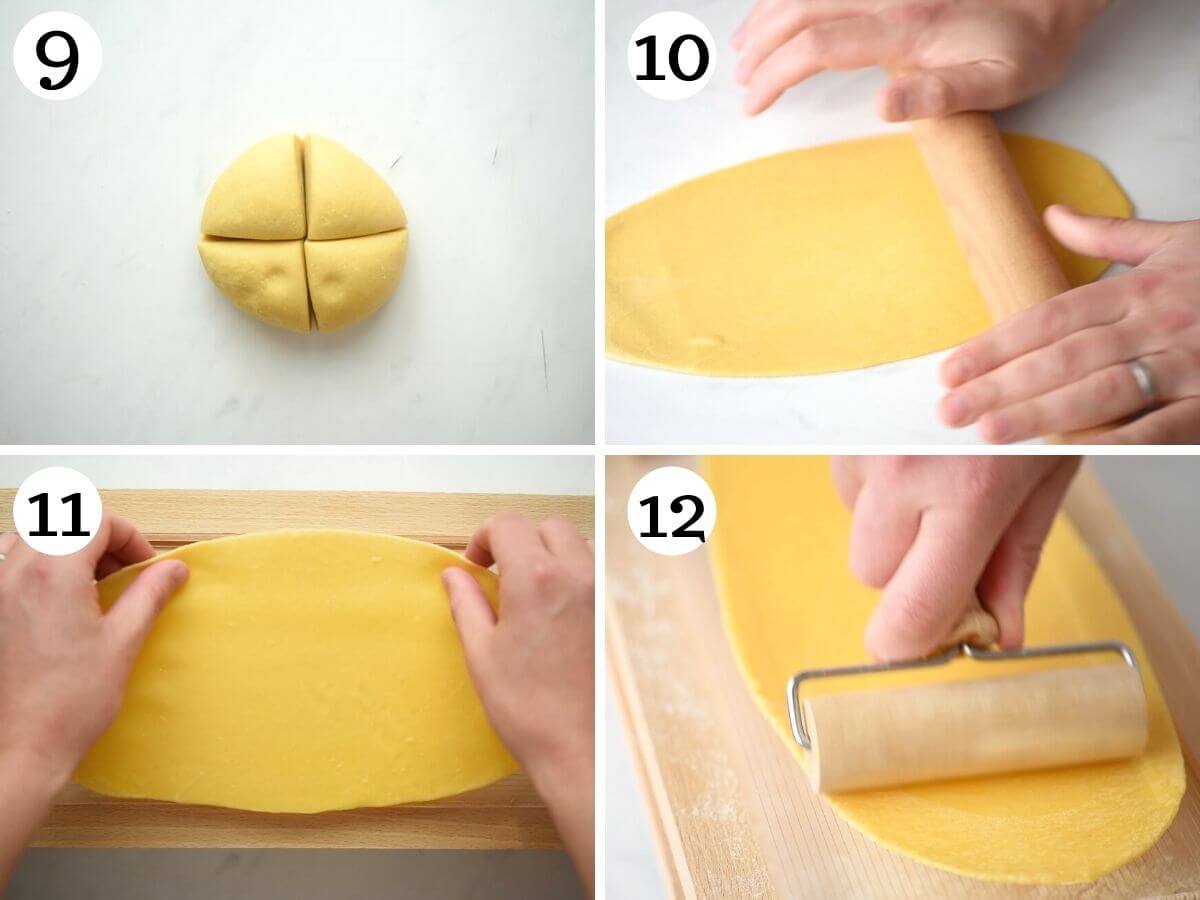
Step 5) Sprinkle the Chitarra tool and your sheet of pasta with a little semola (or flour. Place the sheet of pasta on top and roll over the pasta using a roller or rolling pin until the pasta is cut and has fallen through (photos 12-15).
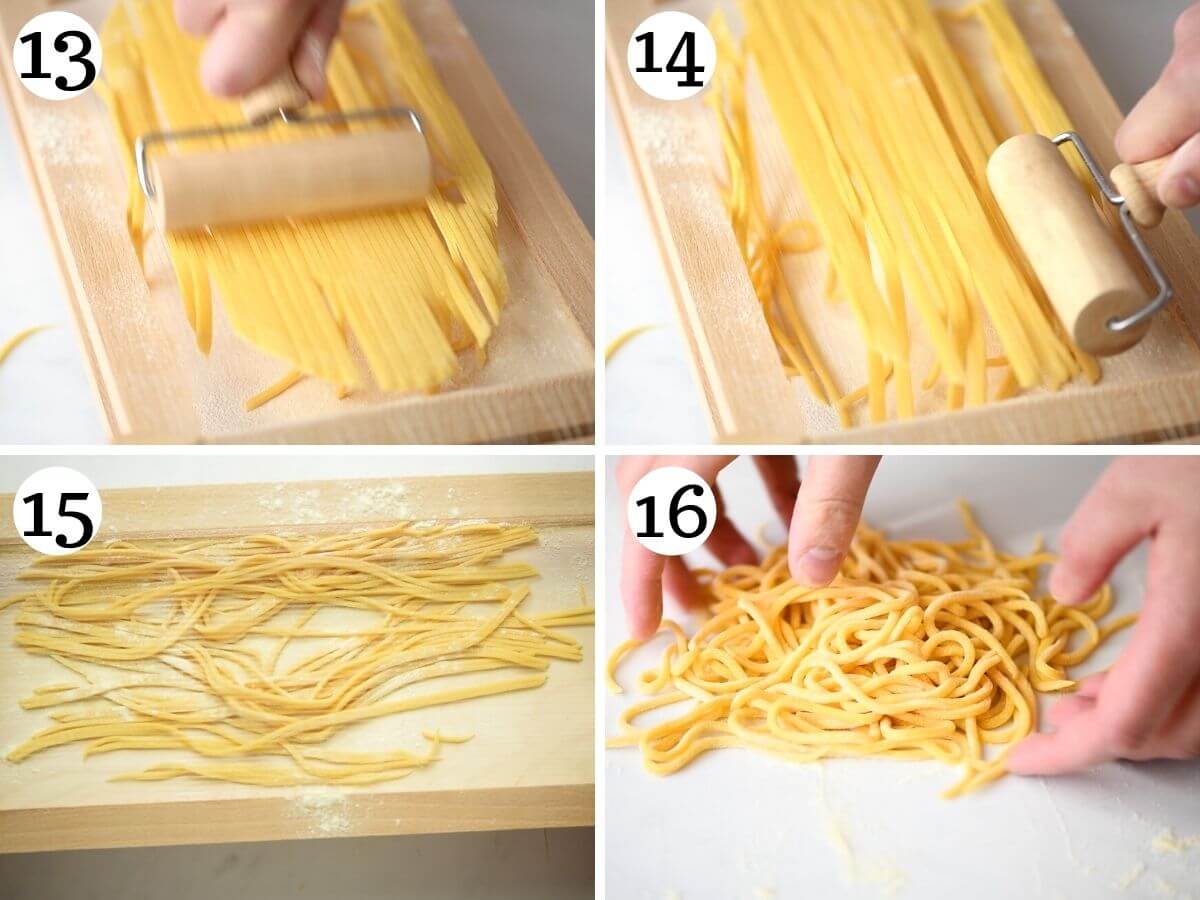
Step 6) Dust the Tonnarelli (Spaghetti alla Chitarra) in plenty semola so they don’t stick to each other (you might need to separate some strands with your hands). Wrap the pasta around your hand to create a nest. Place them on a baking tray or surface dusted with semola until ready to use (photo 16).
Recipe tips and FAQs
- Kneading the dough – when kneading the dough, if you find that there is excess flour left that’s no longer absorbing into the dough that’s fine, it just means that your eggs were slightly smaller so you need less flour.
- Give space for the pasta to stretch – make sure there is at least a 1 inch space at the top and bottom of the chitarra once you put your pasta on top. When you start rolling it it will stretch.
- Use more semola for dusting – dust the chitarra with semola and use it to sprinkle on the pasta once cut, this will stop it from sticking together.
If you find that the strings are too loose and it’s making it hard to cut the pasta you can use the tension screws at the bottom of the chitarra to tighten the strings.
Yes, you can make this without semola flour which will give you a much softer pasta (with less bite). Just replace 100g of semola for 100g of 00 flour.
Wrap the pasta around your hand to roll it into nests (make sure to dust the pasta in plenty semola) and place them on a baking tray dusted with flour. Cover loosely with a kitchen towel until ready to use. Use the same day.
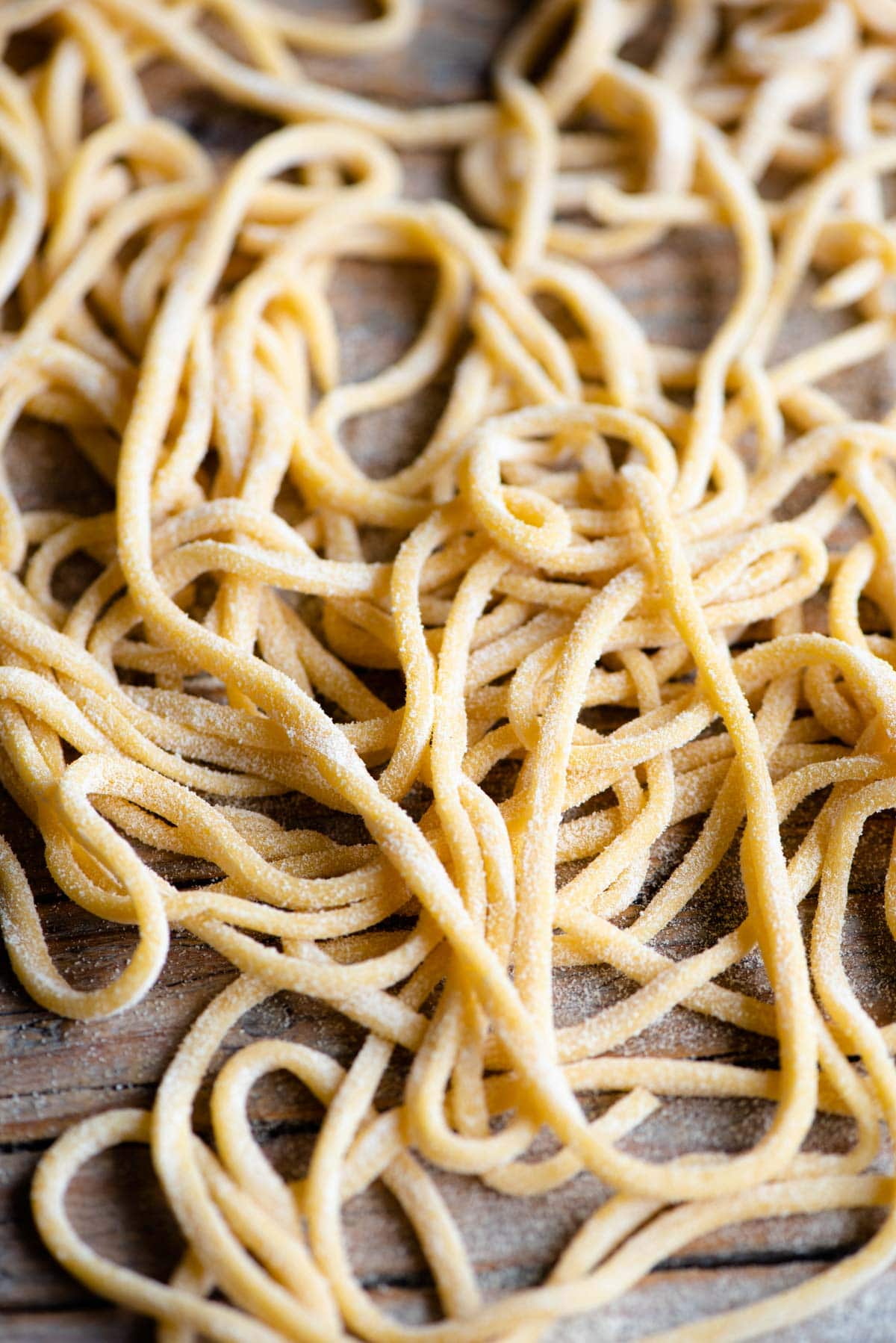
Sauces to serve tonnarelli pasta with
There are so many ways to serve Tonnarelli pasta, why not serve it with Cacio e Pepe as they do in Rome, Carbonara or Gricia are other great options.
You can also opt for a tomato sauce or pesto sauce which also work really well.
If you’ve tried this Tonnarelli recipe or any other recipe on the blog then don’t forget to rate the recipe and let me know how you got on in the comments below, I love hearing from you! You can also FOLLOW US on FACEBOOK, INSTAGRAM and PINTEREST or sign up to our NEWSLETTER to see more of our delicious food
Step By Step Photos Above
Most of our recipes come with step by step photos, helpful tips and tricks to make it perfectly first time and even video!
Tonnarelli Pasta (Spaghetti alla Chitarra)
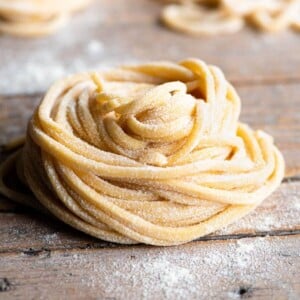
Equipment
- Chitarra pasta tool
- Rolling pin
Ingredients
- 200 g Italian Tipo 00 flour, (1 and 1/2 cups)
- 100 g Semola rimacinata, (extra fine semolina flour) (3/4 cup)
- 3 large eggs
Instructions
Make the dough
- Mix the two flours together in a large mixing bowl then tip it out onto a clean work surface. Press the bottom of the bowl onto the flour to create a well in the middle.
- Whisk the eggs together in a separate bowl then pour them into the middle of the well. Use a fork to incorporate the flour into the egg until a rough dough has formed.
- Use your hands to knead the dough for 10 minutes until it’s smooth and elastic. It shouldn’t be sticky. Wrap in plastic wrap or clean kitchen towel and let it rest for 30 minutes.
Shape the pasta
- Cut the dough into 4 portions and roll on portion out with a rolling pin until it’s the same thickness as the width of the chitarra strings (around 3mm).
- Sprinkle the chitarra and pasta sheet with a little semola then lay the pasta on top of the strings of the chitarra. Use a rolling pin to roll over the pasta a few times until it’s cut and fallen through the strings.
- Repeat this with the remaining dough. You may need to separate the tonnarelli from each other once cut.
- Dust them again with semola then form them into nests until ready to use.
How to cook the tonnarelli
- Bring a large pot of water to a boil and salt it generously.
- Boil the tonnarelli for around 4-5 minutes then transfer them to your cooked pasta sauce.
Video
Notes
- Kneading the dough – when kneading the dough, if you find that there is excess flour left that’s no longer absorbing into the dough that’s fine, it just means that your eggs were slightly smaller so you need less flour.
- Dust the pasta and surfaces – it’s important to lightly dust the pasta tool and pasta with semola so it doesn’t stick.
- Give space for the pasta to stretch – make sure there is at least a 1 inch space at the top and bottom of the chitarra once you put your pasta on top. When you start rolling it it will stretch.
Helpful Info for All Recipes
- I always use extra virgin olive oil in all of my recipes unless stated otherwise
- When I use canned or jarred tomatoes of any kind I always use Cirio or Mutti brands for the best results and flavour.
- All vegetables are medium sized unless stated otherwise
- All recipes are tested and developed using a fan (convection) oven
- Find out more about how nutrition is calculated.
- Check out our must have Italian Pantry Staples.
- You can also find all our Essential Kitchen Tools for Italian Cooking.
Nutrition
Nutrition information is automatically calculated, so should only be used as an approximation.
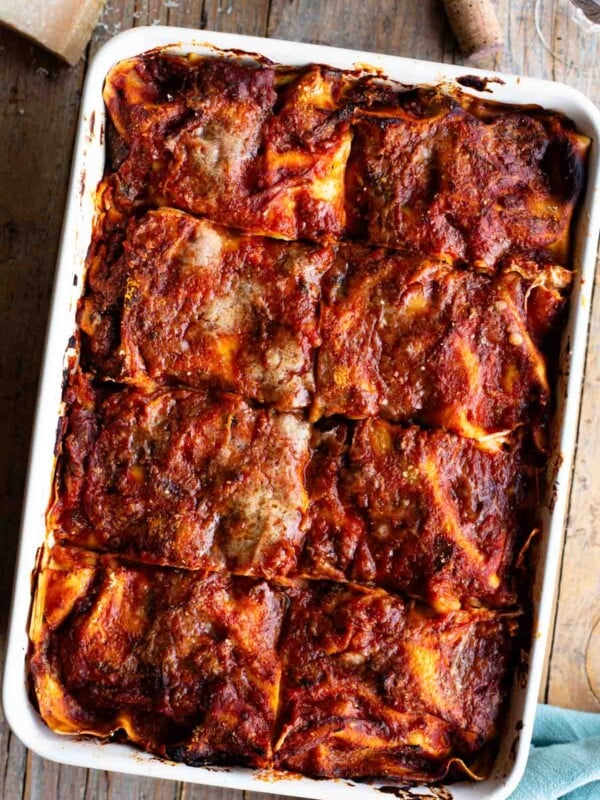
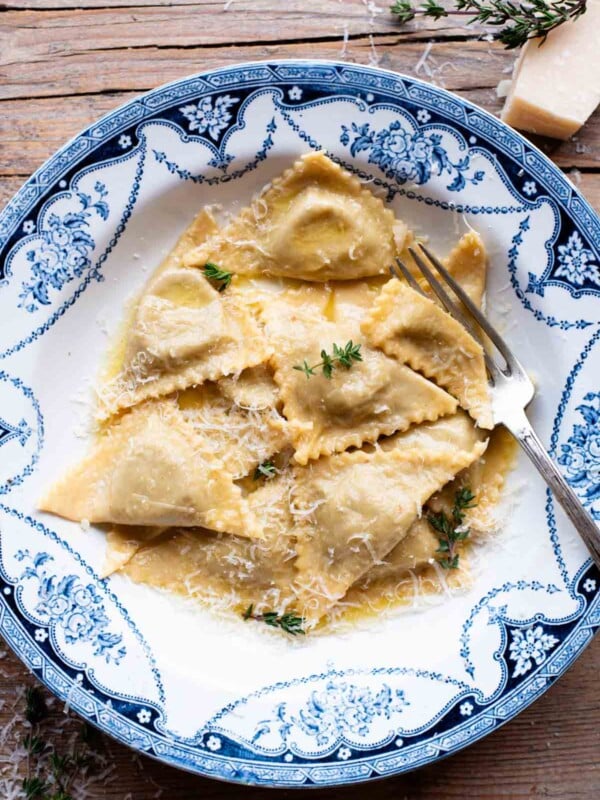
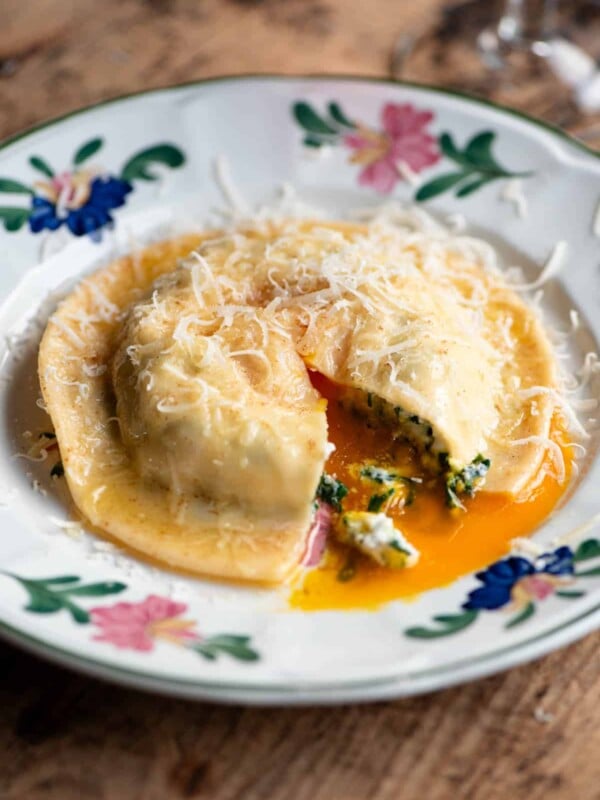
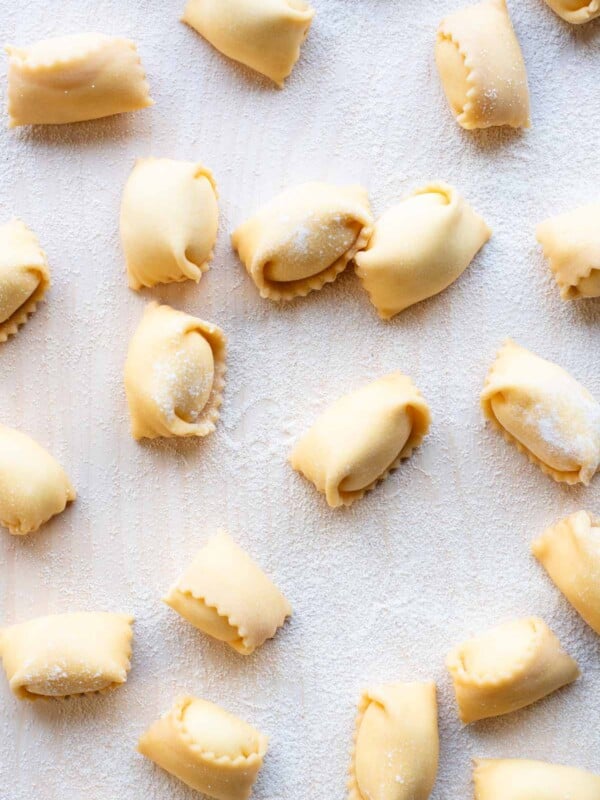









Hi, I used the 2 types of flour & 3 eggs & kneaded for 10 minutes, but it felt a bit dry & very stiff, any ideas, much appreciated.
Hi Brian, it could be the size of your eggs since they all vary. If pasta dough feels stiff your can add a little water by wetting your hands and kneading. I 100% recommend to always use a kitchen scale to weigh out the flour when making pasta too!